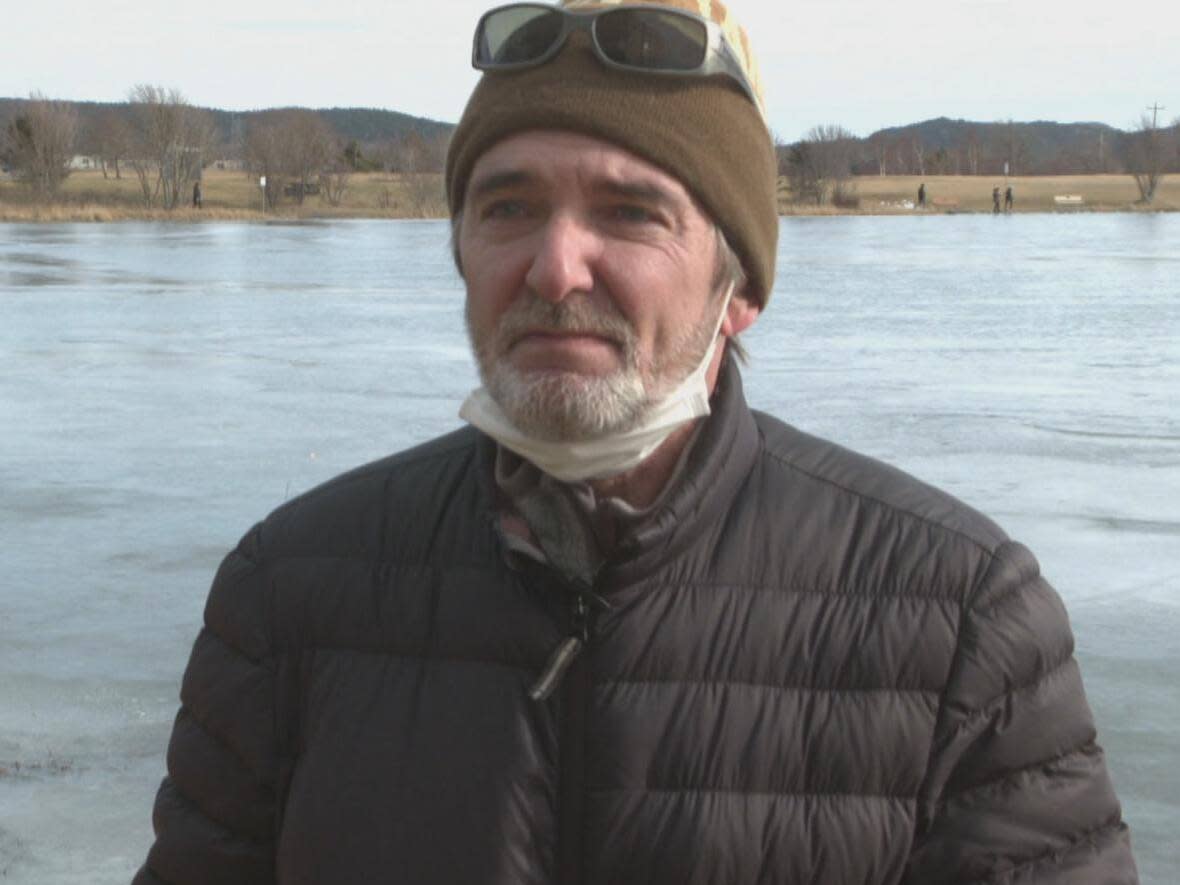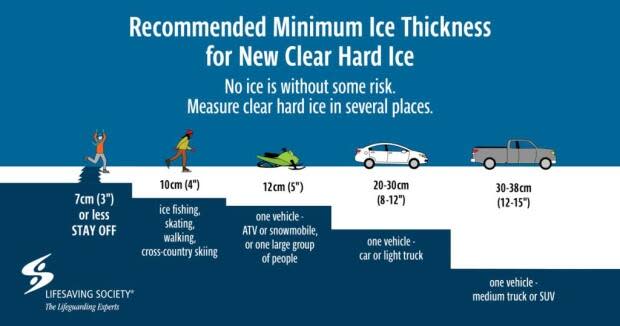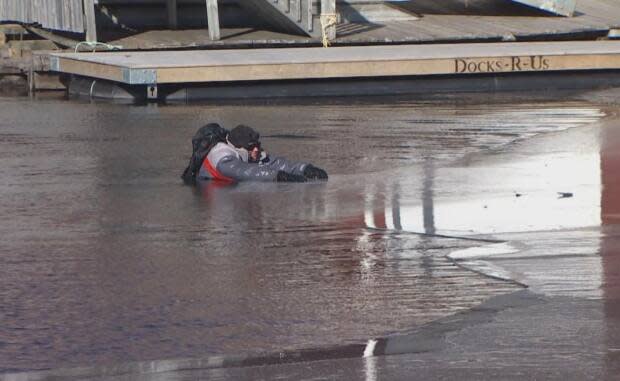Looking for a pond skate this winter? Here's how to stay safe amid the wacky weather

With all the wild changes in eastern Newfoundland's weather over the past few weeks, a water safety group is urging people to use caution before stepping out onto the ice.
As the mercury bounces up and down inside thermometers on what seems like a daily basis, the Lifesaving Society of Newfoundland and Labrador wants outdoor fun-seekers to check the ice first.
"I think that everybody should be very, very careful," the group's vice president of public education, Barry Fordham, told CBC News.
"We've had some very cold temperatures in the last couple of days, but I don't think it's quite safe enough yet to go out on."
The eastern part of Newfoundland has seen extensive rainfall over the past two weeks, making most of the ice incapable of bearing weight — and turning activities like skating, skiing and ice fishing into high-risk endeavours.
Organizations like the Lifesaving Society often recycle the same message from year to year — that is, how to stay safe on the ice — but it seems there are some who just aren't getting it.
"It's an ongoing battle," Fordham said. "It's a public education thing that we at the Lifesaving Society take very seriously."

Despite the annual plea for ice safety, tragedy still happens on the ice. According to statistics from the Lifesaving Society, 15 per cent of water-related fatalities happen on a snowmobile.
Fordham urges riders not to just blindly follow tracks of other snow machines, especially at night.
"If you see a set of tracks going across the waterway, don't necessarily follow them, because it may not be safe enough up ahead."
The most recent rash of ice related incidents was back during the 2019 holiday season, when three people died while out on ice, including a 10-year-old from Clarenville on Christmas Day.
Fordham said folks flocking to the ice should make sure it's at least 10 centimetres thick if they plan on walking, skiing, skating and ice fishing.
Before putting an ATV or snowmobile on a frozen body of water, the ice should be at least 12 centimetres deep. Cars or small trucks require 20 to 30 centimetres of ice depth.
Fordham recommends using an ice auger, or an axe, to check the ice thickness — and not to limit yourself to just one spot, but to take measurements around the perimeter where you will be going.
Avalon temps too unpredictable
While ponds in other parts of the province are safe for skating, it's not the case on much of the Avalon.
"You need a consistent temperature that is below zero to form the ice, for quite a few days, and then [it has to] remain cold for the rest of the season," Fordham said.
For those who insist on braving the ice, the society has a few more tips.

"Don't go by yourself," said Fordham. "Make sure you file a trip plan [and] have the necessary safety equipment with you — most importantly, a flotation device of some sort."
He also recommends ice picks that can be hung around your neck to help yourself get out, should you happen to fall in. Fordham would also like to see people carry a rescue throw bag: a floating bag with a rope inside that you can tie around yourself if you fall in, before tossing the bag to someone nearby to help haul you out.
If you do find yourself plunged neck-deep into freezing water, try not to panic.
"If you do go through the water it's important not to gasp right away," Fordham said. "Having that PFD or life jacket on will bob you into the water, but it will bob you up pretty quick and avoid a lot of water being taken into your lungs."
This will allow you to try and get out of the chilly situation by going back the same way you came in, then roll away from the hole onto more solid ice.
If you feel any doubt, Fordham said, it's pretty simple. "Don't go out."


